

Harvard University
Appointed in 2006
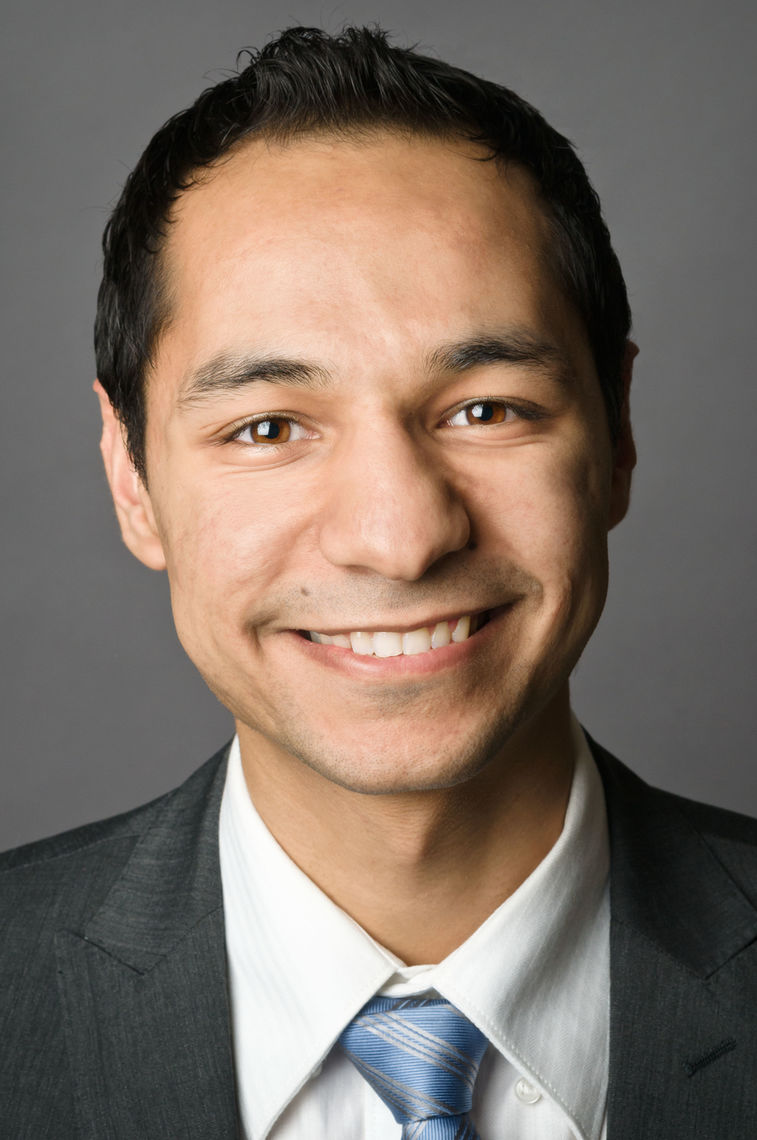
University of Washington
Appointed in 2021
Read more
University of Washington
Appointed in 2021
Despite the tremendous efforts spent towards genetically reprogramming T cells for therapeutic purposes, the complex ex vivo procedures and costs involved in producing genetically modified lymphocytes remain major obstacles for implementing them as a standard of care in the treatment of cancer. As a JCC fellow, my goal has been to bypass these obstacles by developing a technology that combines designed protein logic with engineered viruses to target and genetically engineer specific cell populations in vivo. To achieve targeted cellular engineering in vivo, I adapted a co-localization dependent protein switch, named Co-LOCKR, that classifies cells based on their receptor expression. Upon locating cells with the correct receptor combination, Co-LOCKR presents a target peptide that guides engineered viruses to genetically modify tagged cells.

Massachusetts Institute of Technology
Appointed in 1971
Read more
Massachusetts Institute of Technology
Appointed in 1971


Stanford University
Appointed in 2016
Viruses make excellent tools for studying host pathways because they have evolved ways to subvert or co-opt those pathways. I’m interested in the autophagy pathway- a highly conserved means for the cell to recycle cellular material during times of stress by promoting vesicle formation and subsequent degradation of cytoplasmic contents. Autophagy is a fascinating and broad-reaching area of research where there is still little mechanistic knowledge, but appears to be involved in many different diseases including cancer, neurodegenerative diseases, and infectious diseases.
I’m particularly interested in how viruses co-opt this pathway to promote their own replication and spread. To address the mechanisms by which viruses induce and interact with the autophagy pathway, I am using poliovirus infection in HeLa cells that have several key autophagy genes knocked out by Crispr-Cas9. This will allow me to explore how the virus interfaces with the distinct complexes of the autophagy pathway and how the virus utilizes these for replication. Using viruses to study this underlying cellular process may help uncover potential drug targets for other diseases where autophagy is implicated.
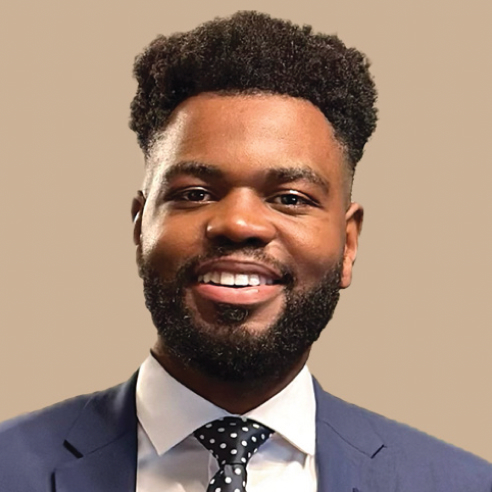
Max Planck Institute of Immunobiology and Epigenetics
Appointed in 2024
Read more
Max Planck Institute of Immunobiology and Epigenetics
Appointed in 2024
Epigenetic modifications are changes that affect how our genes are turned on or off,
without changing the underlying DNA sequence. These changes can be influenced
by factors like our environment, diet, and lifestyle. The epigenetic modifications of
DNA and chromatin-associated proteins play a crucial role in regulating cell-type
specific gene expression. Methylation of DNA, for example, is associated with
turning genes off via transcriptional repression. In most cells, DNA methylation
occurs in the context of “CG” dinucleotides. Neurons, however, are also methylated
at “CA” sequences.
Dr. Stephen Abini-Agbomson predicts that the oligomerization, or the
process of small molecules joining together to form a larger structure, of DNA
methyltransferases (DNMT) is important for their appropriate genomic localization
and activity. He will use cutting edge single-molecule approaches to investigate the
role of DNMT oligomerization in gene expression during neuronal development
in Dr. Ibrahim Cissé’s lab at the Max Planck Institute of Immunobiology and
Epigenetics. Mis-regulation of DNA methylation is frequently observed in
neurodevelopmental disorders and many types of cancer. Dr. Abini-Agbomson’s
findings may produce new mechanistic insights to inform future therapeutic
targeting of these diseases.
Abini-Agbomson honed his expertise in epigenetics and chromatin biology as
a graduate student in Dr. Karim-Jean Armache’s lab at the New York University
Grossman School of Medicine. There, he demonstrated that the histones encoded
by giant viruses can form nucleosomes. This was quite surprising as previously it
was thought that only eukaryotes have nucleosomes. Additionally, Abini-Agbomson
showed that the lysine methyltransferase SUV420H1 impacts chromatin dynamics
through both enzymatic and non-enzymatic mechanisms. With this research
background, Abini-Agbomson is poised to make breakthrough discoveries on the
impact of epigenetic protein oligomerization in neurodevelopment.


Iowa State University
Appointed in 2001

University of California, Irvine
Appointed in 1975
Read more
University of California, Irvine
Appointed in 1975


Rockefeller University
Appointed in 2019
All viruses require the vast resources of a cell to complete their lifecycles, carrying with them only the tools essential for their replication that cannot be found in a host. While many viruses infect only a single or few closely related species, arboviruses constantly cycle between an insect vector and a vertebrate host. This requires that a virus be able to take advantage of two unique cellular environments while evading entirely different defense systems to do so. Many of the host factors essential for viral replication in the insect vectors remain entirely unidentified; of those that have been defined, only a subset is required in both insect and vertebrate species. Many more are utilized in only one species, leading to the hypothesis that arboviruses have found multiple ways to achieve the same ultimate goal of replication and dissemination in these dual hosts. My work seeks to understand how these disparate environments can support the replication and transmission of a single virus and how viruses can adapt to new host species.

Salk Institute for Biological Studies
Appointed in 2005
Read more
Salk Institute for Biological Studies
Appointed in 2005
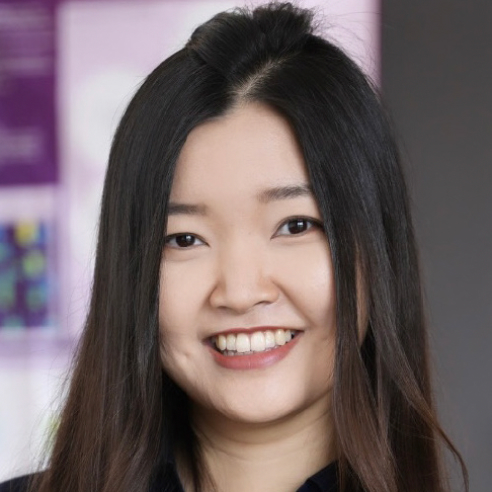
University of Washington/Institute for Protein Design
Appointed in 2024
Read more
University of Washington/Institute for Protein Design
Appointed in 2024
Cell surface proteins can drive diametrically opposed phenotypic outcomes when bound by ligands, distinct molecules that attach to other specific molecules. Therefore, efforts to rewire membrane protein signaling, introducing a specific function could improve and change how we develop treatments.
Dr. Green Ahn will engineer novel membrane protein effectors in Dr. David Baker’s lab at the University of Washington. Using artificial intelligence protein design tools, Dr. Ahn will design a library of de novo extracellular effectors against particular ectodomains of cell surface proteins and investigate how those effectors impact downstream function. Ahn’s studies will provide fundamental insight into membrane protein signaling and set the stage for future therapeutic targeting of these pathways.
Ahn’s expertise in targeting membrane proteins stems from her graduate studies in Dr. Carolyn Bertozzi’s lab at Stanford University. There Ahn developed the first cell-type-specific degrader for a membrane protein. Ahn built on that study to discover cellular factors that are required for targeted membrane protein degradation. She also helped develop the first de novo designed proteins that trigger membrane protein degradation in collaboration with Dr. David Baker’s lab. With this experience Dr. Ahn is poised to make future discoveries with implications for our fundamental knowledge of protein membrane biology as well as future therapeutic strategies.

University of California, San Francisco
Appointed in 2007
Read more
University of California, San Francisco
Appointed in 2007


Johns Hopkins University
Appointed in 1971

University of Colorado, Boulder
Appointed in 1993
Read more
University of Colorado, Boulder
Appointed in 1993

University of California, San Francisco
Appointed in 2017
Read more
University of California, San Francisco
Appointed in 2017
Cellular therapy, exemplified by chimeric antigen receptor (CAR) T cells, is an emerging class of therapeutics that applies the principles and techniques of synthetic biology to the treatment of disease. Although promising clinical results have been obtained with CAR T cells in B Cell lymphoma and leukemia, substantial work remains to create cellular therapies that can effectively treat solid tumors. In part this is due to a lack of robust mechanisms to control spatial location of cells, which can diminish efficacy, increase toxicity and limit more sophisticated future therapeutic applications. In my research I am interested in genetically modifying T cells to create user-defined synthetic trafficking functionalities in order to promote solid tumor infiltration. In addition I am developing syngeneic mouse tumor models to synthetically control the migratory signals (chemokines) in a tumor in order to map the migration “code” a tumor uses to control the immune system. These projects have the potential to form the basis of the next generation of adoptive cellular therapies and illuminate the mechanisms that the tumor microenvironment uses to regulate the endogenous immune system.
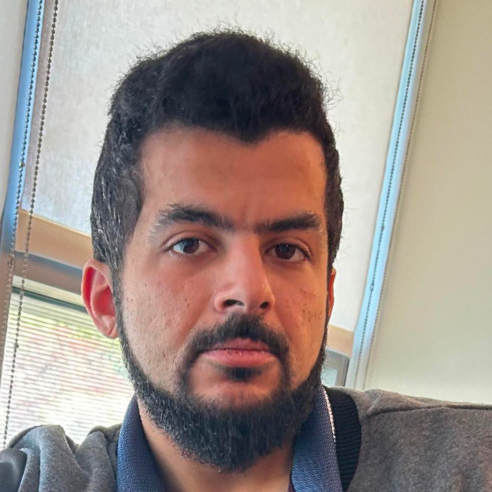
Boston Children's Hospital/Harvard Medical School
Appointed in 2024
Read more
Boston Children's Hospital/Harvard Medical School
Appointed in 2024
Homologous recombination (HR) is an important pathway for error-free DNA strand break repair. Proper repair of DNA breaks is crucial for preventing cancer, as indicated by the number of frequent genetic mutations in this pathway that lead to breast, ovarian, and other types of cancer. Therefore, a better mechanistic understanding of DNA break repair may open up new avenues for therapeutic targeting of cancer.
Dr. Ibraheem Alshareedah is taking a novel approach to investigate DNA break repair in Dr. Taekjip Ha’s lab at Harvard Medical School. It is known that BRCA2 loads RAD51 onto single-stranded DNA (ssDNA), yet HR still occurs in BRCA2-mutant cancers, suggesting that there is redundancy in this pathway. Dr. Alshareedah hypothesizes that RAD52 nanoclusters in cells recruit RAD51 and load it onto ssDNA, even in the absence of functional BRCA2. To investigate this hypothesis, Alshareedah will examine if RAD51, ssDNA, and other DNA-break repair proteins are recruited to RAD52 nanoclusters in cells. He will then determine which RAD52 protein features are required for cluster formation. By understanding the partial redundancies in the DNA repair pathway, Alshareedah’s research may reveal novel targets for treating BRCA2-mutant cancers.
Alshareedah’s expertise in protein and nucleic acid clusters stems from his Ph.D. research in Dr. Priya Banerjee’s lab at the University at Buffalo. There, Alshareedah focused on the formation and material properties of protein-nucleic acid biomolecular condensates. He developed an in-condensate passive micro rheology assay and showed that condensates behave as an elastic solid on short time scales, but like a viscous liquid on long time scales. Alshareedah also used this method to probe the aging process of condensates, which is thought to be related to protein aggregation in neurodegenerative diseases. Now in his postdoctoral research, Alshareedah will investigate the functional importance of RAD52 condensates in BRCA2-mutant cancers.


Stanford University
Appointed in 1977

University of California, Berkeley
Appointed in 2015
Read more
University of California, Berkeley
Appointed in 2015
Post-translational modifications regulate key interactions in signaling pathways. In protein tyrosine kinase (PTK) signaling, for example, crosstalk between phosphorylation and ubiquitylation signals is critical to proper cellular function. A phosphorylation cascade is triggered upon PTK activation; in turn, the RING-type E3 ubiquitin ligase Cbl is activated, and attenuates many of these signals via lysosomal degradation. In cancers where there are mutations in PTK signaling, this communication breaks down, leading to uncontrolled cell proliferation and poor patient prognosis.
During my postdoctoral work in Dr. John Kuriyan’s lab at UC Berkeley, I am using biochemical assays and X-ray crystallography to better understand the regulation and selectivity of Cbl with respect to its targets. Cbl has a unique activation mechanism, whereby substrate docking is followed by phosphorylation at a conserved tyrosine residue, turning Cbl “on.” I hypothesize that crosstalk between Cbl’s tyrosine kinase binding and RING domains dictates its selectivity and regulates substrate kinase activity. PTK signaling is a finely tuned product of evolution, and a greater understanding of how Cbl interacts with its substrates will unveil new possibilities for intervention.

University of California, Berkeley
Appointed in 1993
Read more
University of California, Berkeley
Appointed in 1993

University of California, Berkeley
Appointed in 1962
Read more
University of California, Berkeley
Appointed in 1962


Dana-Farber Cancer Institute
Appointed in 1998

Cold Spring Harbor Laboratory
Appointed in 1970
Read more
Cold Spring Harbor Laboratory
Appointed in 1970

University of Texas Southwestern Medical Center
Appointed in 1991
Read more
University of Texas Southwestern Medical Center
Appointed in 1991


New York University
Appointed in 1984


Harvard University
Appointed in 1995


Broad Institute
Appointed in 2019

Massachusetts General Hospital /
Harvard Stem Cell Institute
Appointed in 2009
Read more
Massachusetts General Hospital / Harvard Stem Cell Institute
Appointed in 2009
My current research focuses on the molecular and epigenetic mechanisms governing the process of nuclear reprogramming of somatic cells into induced pluripotent stem cells (iPS cells). More specifically, I study how the differentiation stage of the initial somatic cell affects the efficiency of reprogramming into iPS.
I was born at Naoussa, a small town in northern Greece. I studied biology at Aristotle University of Thessaloniki and pursued my PhD on molecular ¬†biology at the medical school of the National University in Athens. While working at Dr. Dimitris Thanos¬í lab for my PhD thesis — In vivo study of the dynamics of transcriptional ¬†¬†complexes” — I became intrigued by biochemistry and familiar with molecular and cytogenetic techniques. ¬†I also published my first paper, which ¬†opened the door to Harvard University and a new world. ¬†I switched my scientific focus to this new and exciting field. I joined Dr. Konrad Hochedlinger¬ís lab and am more than happy with my choice. At the beginning of my second year, I feel so much richer in knowledge and research experience. I also enjoy life in Boston, which is an ideal city for tango dancing and hiking.”

California Institute of Technology
Appointed in 1996
Read more
California Institute of Technology
Appointed in 1996


Columbia University
Appointed in 2002


Stanford University
Appointed in 1969

California Institute of Technology
Appointed in 2006
Read more
California Institute of Technology
Appointed in 2006

California Institute of Technology
Appointed in 2017
Read more
California Institute of Technology
Appointed in 2017
Strong synthetic recording of cell state trajectories during development
The incredible journey from a zygote to an animal entails transition of cells from one state to another as they proliferate. Although fundamental to our understanding of development, the trajectories of single cells during these transitions have been elusive due to technical limitations. A growing body of evidence suggests that cellular heterogeneity is prevalent in biological systems. Therefore, the average behavior of cell populations cannot be reliably used to infer the trajectories of the cells they comprise. Cellular behaviors are also highly dynamic. Techniques that rely only on static snapshots lose critical information about the longitudinal dynamics and spatial context of cells.
I am interested in developing methods for recording lineage and transcriptional event histories within the genome of the cells. Recently, our group has published a CRISPR/Cas9-based method, called MEMOIR, which involves “writing” of structured mutations at defined sites in the genome, where they can be read out using multiplexed in situ hybridization. Approaches analogous to phylogenetic inference can then be used to reconstruct lineage and event histories based on the mutation patterns. I seek to improve this system and implement it in mouse embryos to study dynamics of cell state transitions in early mammalian development. This work will provide the tools and theoretical basis for reconstructing lineage trees and decorating them with dynamic gene expression information, in virtually any developmental context.
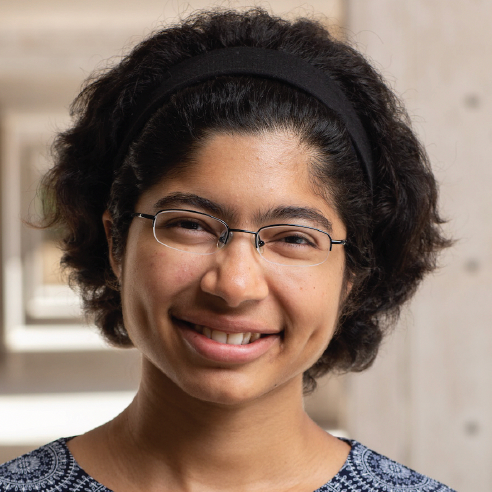

Princeton University
Appointed in 2024
Social interactions and behaviors are mediated by a hormone-sensitive brain network. For example, female mice are sexually receptive only during a certain phase of their estrous cycle around ovulation. Yet, it is still unclear how hormones modulate this network’s circuit architecture and dynamics to dictate changes in behavior.
Dr. Meenakshi Asokan will examine this missing link in Dr. Annegret Falkner’s lab at Princeton University. Dr. Asokan hypothesizes that sex hormones reorganize neural dynamics and functional coupling in crucial hubs for top-down control of sociability to drive flexible female social choice. Asokan will use a behavioral assay and computational tools to quantify the hormone-dependent changes in social motivation and preference. She will then pinpoint the location of these differences in the brain, address how these neural ensembles alter the coding of social interactions and manipulate these regions to verify their causal role in hormone-dependent changes in social behaviors. These studies will provide fundamental insight into how sex hormones rewire information processing to impact social behaviors. This information will be invaluable in situations where steep changes in hormone levels are linked to depressive symptoms such as during post-partum, perimenopausal, and pre-menstrual stages in women.
Asokan built her expertise in understanding how neural circuits influence perception and behaviors in Dr. Daniel Polley’s lab at Harvard University. During her graduate studies, Asokan focused on neural substrates that underlie changes in perception following noise-induced hearing loss. She localized this change to layer 5 cortico-collicular axons that innervate the amygdala and striatum, which explains the exacerbated sound-triggered anxiety and aversiveness in hearing loss patients. Additionally, through multi-regional extracellular recordings and optical measurements, Asokan discovered cooperative plasticity in inputs to amygdala as mice learn to reappraise neutral stimuli as possible threats. Asokan will now use her expertise in linking brain regions to changes in social behavior to investigate how sex hormones influence these processes during her postdoctoral research.


New York University
Appointed in 2000

University of California, San Francisco
Appointed in 1989
Read more
University of California, San Francisco
Appointed in 1989


New York University
Appointed in 1960

Harvard University Medical School
Appointed in 1998
Read more
Harvard University Medical School
Appointed in 1998


Rockefeller University
Appointed in 2022
Profound alterations in gene expression profiles occur as stem cells from normal tissue transform into cancer stem cells (or tumor-initiating cells) that are able to initiate tumor growth and propagate tumor masses. However, how the gene expression program is rewired during tumorigenesis remains elusive. My research project centers on exploring and identifying key factors that are responsible for driving the divergence of their gene expression profiles. Using in vivo mouse models and genomics and imaging approaches, I am investigating how spatiotemporal genome organization plays a role in oncogenic transcriptional reprogramming during skin squamous cell carcinoma (SCC) development. Skin SCC has emerged as a public health issue due to its increasing incidence and potential for metastasis and recurrence, particularly for the patients placed on immunosuppressive drugs. If successful, my work would further our understanding of the mechanisms underlying oncogenic transcriptional reprogramming and provide new avenues for developing new cancer therapeutics.

University of California, San Francisco
Appointed in 2017
Read more
University of California, San Francisco
Appointed in 2017
AgRP neurons in the arcuate nucleus of hypothalamus are exposed to plasma circulating signals and playing critical role in the regulation of feeding and homeostasis. Recently, real-time measurements of AgRP neuron activity in awake mice have revealed an unexpected rapid inhibition of these neurons by the detection and ingestion of food. These results challenge the current model for homeostatic regulation, in which AgRP neurons simply monitor circulating hormonal and nutritional signals to regulate feeding, begging the question of what physiological signals regulate AgRP neurons’ activity and generate hunger.
I propose to identify this fundamental “hunger signal” that regulates AgRP neurons through systematic experiments that combine in vivo recording with surgical, pharmacologic, genetic, and optical manipulations. I will reexamine the contribution of traditional hormonal signals, and characterize the function of different postprandial gastrointestinal stimuli in regulating AgRP neuron activity. Next, I will further identify the underlying mechanisms by examining the contribution of gastrointestinal sensory inputs as well as circulating nutrients. Together, these will aid in understanding the regulation of AgRP neuron activity and hunger, which provides a basis for the understanding of obesity as well as diverse motivated behaviors.


Massachusetts General Hospital
Appointed in 2005

University of California, Berkeley
Appointed in 1947
Read more
University of California, Berkeley
Appointed in 1947

MRC Center, University Medical School, England /
Cambridge University
Appointed in 1976
Read more
MRC Center, University Medical School, England / Cambridge University
Appointed in 1976


Princeton University
Appointed in 2016


Stanford University
Appointed in 2017
Aging can be viewed as the time-dependent decline in organismal function which increases the likelihood of death. How and why we age remains one of the greatest mysteries in modern biology. Interestingly, the rate of aging–and ultimately lifespan of organisms–varies greatly even within vertebrates. Among extant vertebrates, extreme longevity appears to have arisen multiple times independently, suggestive of convergent evolution. My project aims to uncover the genes and pathways that contribute to lifespan variation using comparative genomics. At present over 100 vertebrate genomes have been sequenced and are publically available. Included among these organisms are species with both remarkably short and long lifespans. I have set out to develop a computational pipeline which identifies regions that exhibit molecular convergence within the genome of species sharing a similar lifespan. I then plan to characterize these regions biochemically to determine their effects on expression, regulation, and function of the involved genes. Longer term, I will develop mutant mice harboring variants with significant effects on function to directly assess their influence on lifespan in a well-studied model of vertebrate aging.

University of California, Berkeley
Appointed in 1995
Read more
University of California, Berkeley
Appointed in 1995

University of Minnesota
Appointed in 1965
Read more
University of Minnesota
Appointed in 1965


Reed College
Appointed in 1964

Stanford University School of Medicine
Appointed in 1975
Read more
Stanford University School of Medicine
Appointed in 1975

St. Jude Children's Hospital
Appointed in 2020
Read more
St. Jude Children's Hospital
Appointed in 2020


Brigham and Women's Hospital
Appointed in 2019
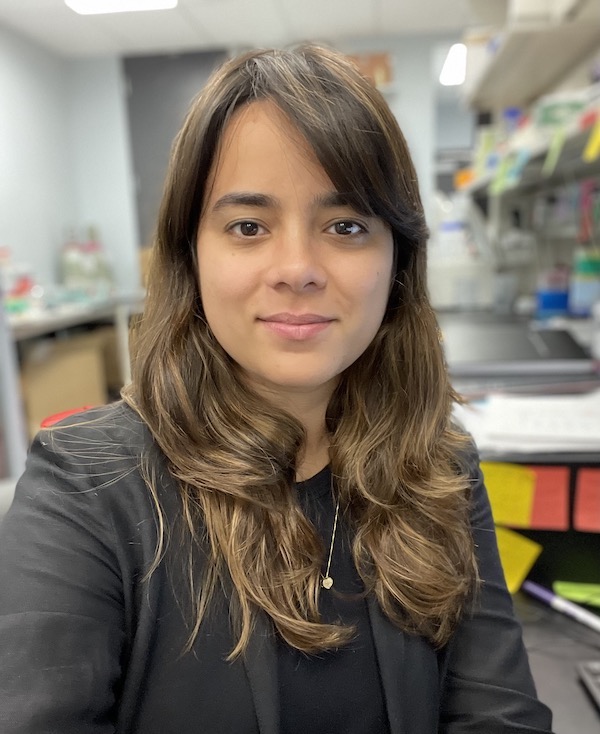
University of Minnesota Twin Cities
Appointed in 2021
Read more
University of Minnesota Twin Cities
Appointed in 2021
Human chordoma is a locally aggressive and invasive type of cancer that occurs in the bones of the skull base and spine, and it is part of a group of malignant bone and soft tissue tumors called sarcomas. It is characterized by high recurrence rates and a lack of chemotherapy response. Although studies using exome sequencing identified a few genetic alterations, the vast majority of chordomas do not appear to have a causal genetic mutation, given that the overall somatic mutation burden in chordoma is modest. Recently, the Chordoma Genome Project provided essential clues about novel genes implicated in chordoma tumorigenesis. DNA sequencing revealed that mutations in the gene encoding the lysosomal trafficking regulator protein (LYST) have a role in chordoma biology, as recurrent truncating mutations were found in 10% of tumors. Our lab has preliminary data suggesting that epigenetic regulation of LYST leads to a clinically aggressive chordoma variant, marked by reduced survival and a high rate of metastasis. Herein, this research focuses on elucidating the mechanisms of epigenetic regulation of chordoma-related genes, like LYST, by applying chromosome conformation capture and protein-DNA interaction techniques. Initial findings have shown differences in chromatin accessibility and conformation between tumor subtypes, suggesting an association with the patient’s prognosis.

University of California, Berkeley
Appointed in 1967
Read more
University of California, Berkeley
Appointed in 1967